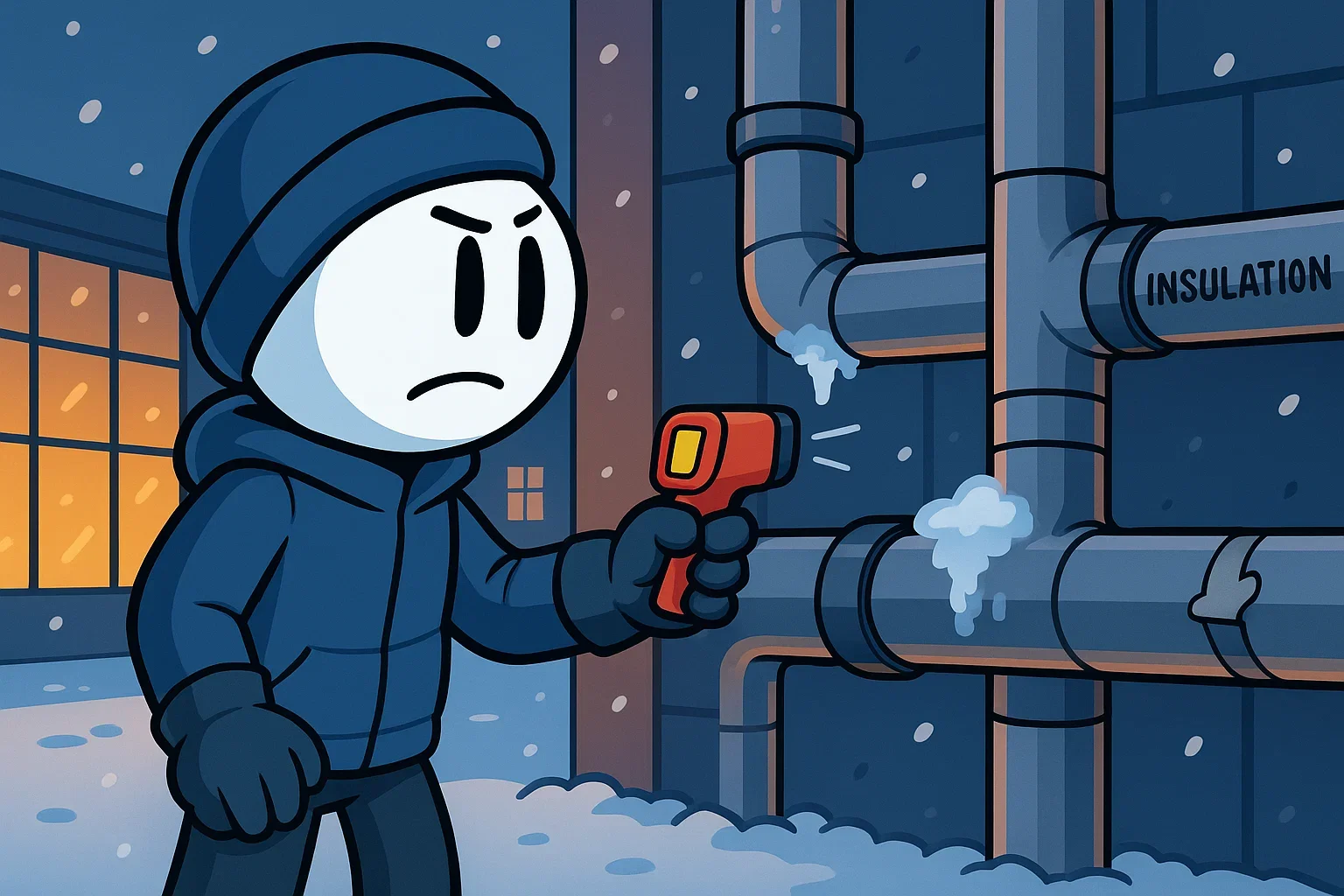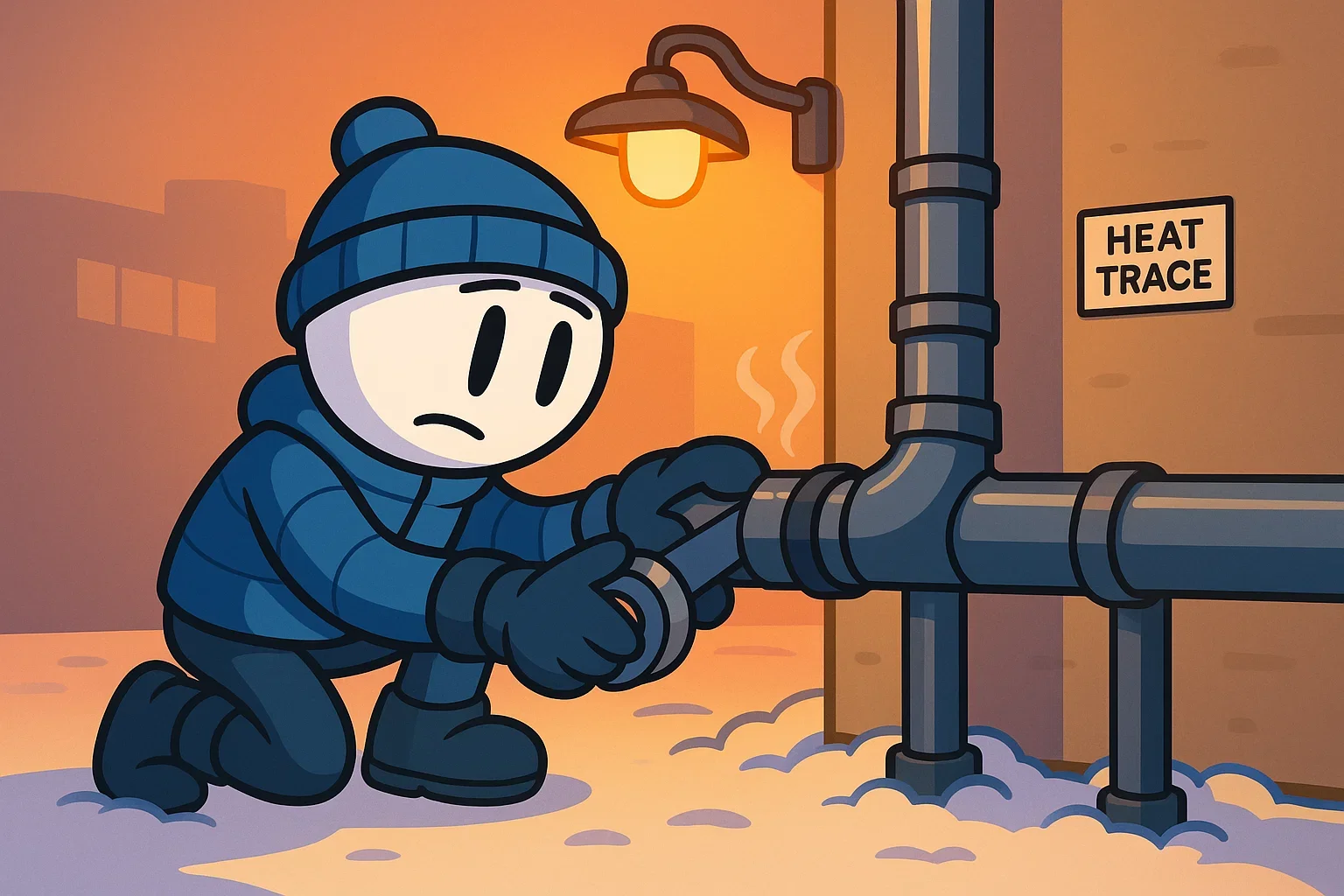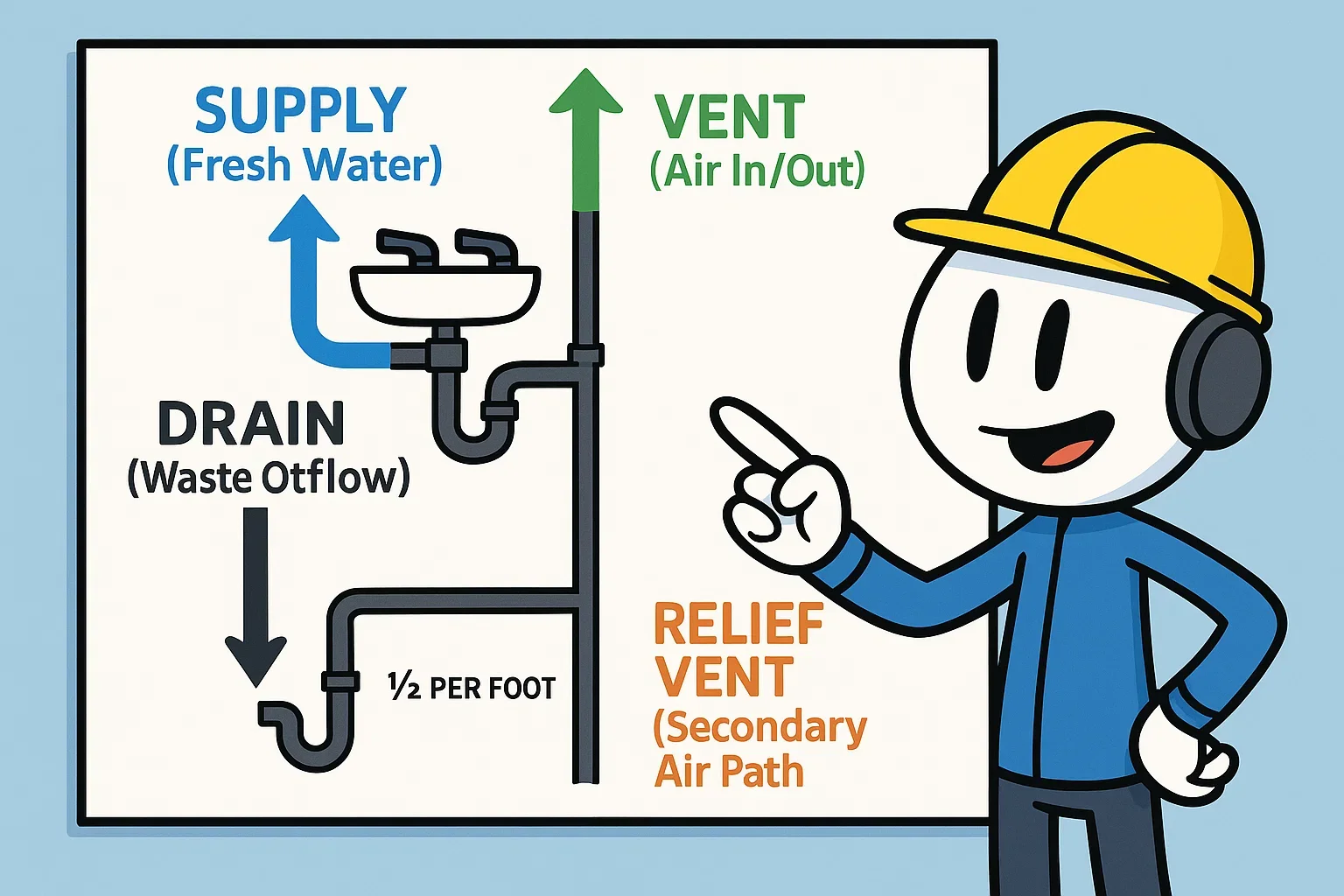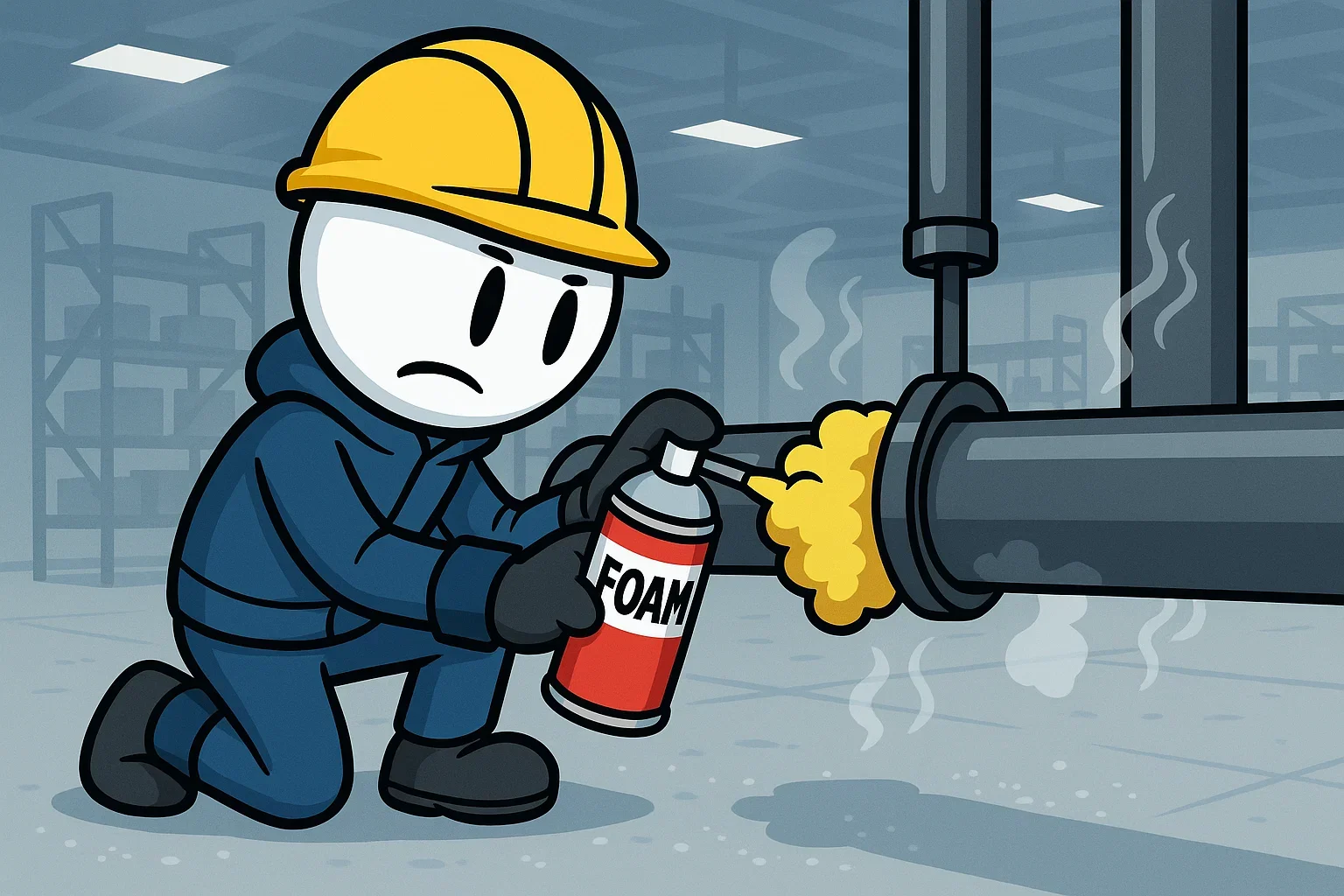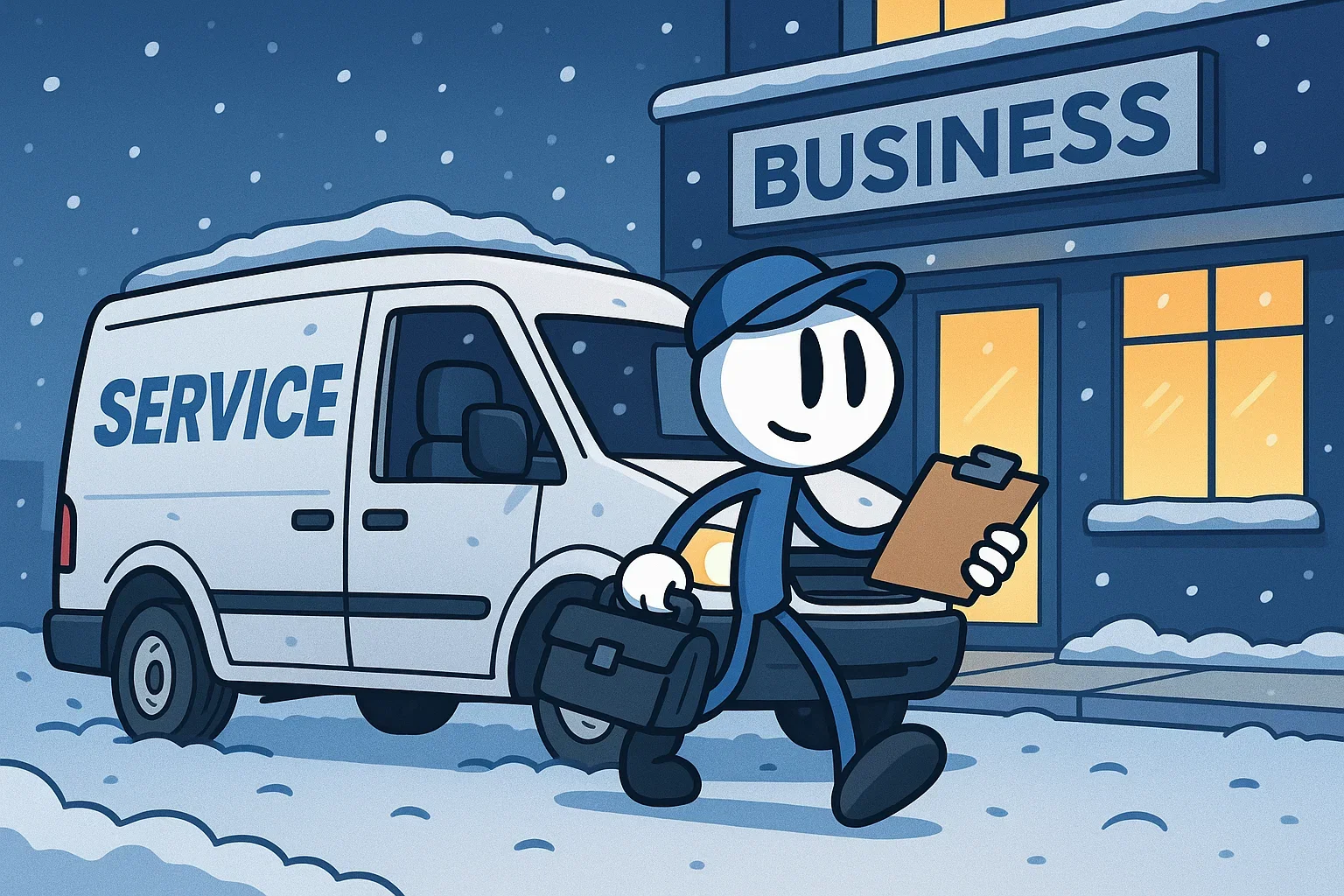Prevent Frozen Pipes at Your Business: Winter Plumbing Prep for Logan County Commercial Properties
When temperatures drop across Oklahoma, even a brief cold snap can spell disaster for unprotected plumbing. Frozen pipes are one of the costliest winter emergencies local businesses face, and the damage can strike overnight. This guide explains how to prevent frozen pipes before winter hits, protect your building’s plumbing, and keep your business running smoothly through the coldest months.
Why Frozen Pipes Are a Serious Winter Risk in Oklahoma
Oklahoma winters may be short, but they’re unpredictable. In February 2021, temperatures in Oklahoma City plummeted to –14°F, and businesses across Logan County suffered catastrophic water damage from burst pipes. A single rupture can cause tens of thousands of dollars in repairs, property loss, and downtime.
According to State Farm, frozen pipes during that freeze led to $472 million in national claims, with Oklahoma alone exceeding $12 million in damages. The takeaway: it only takes one night of extreme cold to overwhelm unprotected plumbing.
Businesses in Guthrie, Edmond, and surrounding areas are especially vulnerable because many commercial structures have exposed or attic-level piping not designed for sub-freezing conditions. Even with average January lows around 25°F, your plumbing is at risk every time temperatures dip below 32°F.
How to Prevent Frozen Pipes in Your Commercial Property
Keeping water moving and pipes insulated is your best defense. Below are proven strategies based on recommendations from the American Red Cross, City of Edmond, and Oklahoma State University Extension.
1. Insulate Exposed and Exterior Pipes
Use foam sleeves, heat tape, or pipe wraps for any water lines in crawl spaces, attics, or exterior walls. Even a quarter-inch of insulation can make a difference. Businesses with sprinkler or irrigation systems should also ensure those lines are properly drained and insulated.
Tip: Insulation costs little compared to repairs. A few dollars of pipe wrap can prevent a $15,000 burst.
2. Keep the Heat On, Even Overnight
During extreme cold, never let indoor temperatures drop below 55°F—even in vacant buildings or storage areas. For sprinkler systems or mechanical rooms, keep ambient temps at 40°F or above to protect sensitive lines.
If your HVAC system is unreliable, schedule a professional inspection early in the season to prevent heating outages that could lead to frozen plumbing.
3. Let Faucets Drip During Deep Freezes
A steady pencil-thin drip keeps water flowing and relieves pressure buildup that can burst pipes. Edmond Electric advises opening cabinets under sinks to circulate warm air and allowing a light drip whenever outdoor temps approach 20°F or lower.
4. Seal Air Leaks and Drafts
Cold air entering through door frames, vents, or wall penetrations can chill pipes quickly. Use caulk or expanding foam to seal gaps, especially around areas where utilities enter the building.
5. Know Where the Main Shut-Off Valve Is
If a pipe freezes or bursts, shutting off the water immediately can prevent massive flooding. OSU Extension recommends labeling the main shut-off clearly and ensuring staff know its location.
Easy Action Plan Before the First Freeze
Here’s a quick checklist to prepare your business plumbing for winter:
- ✅ Schedule a pre-winter plumbing inspection.
- ✅ Insulate every exposed or exterior pipe.
- ✅ Disconnect outdoor hoses and cover exterior faucets.
- ✅ Keep indoor temperatures steady (never below 55°F).
- ✅ Open cabinets and drip faucets during cold nights.
- ✅ Seal gaps and cracks where cold air enters.
- ✅ Locate and test your main water shut-off valve.
These small steps can save thousands in emergency repair costs. As one Edmond utility official put it, “It’s cheaper to drip a faucet than to flood a building.”
Why This Matters for Businesses in Logan County and Edmond
Local conditions make winter preparation especially important. Guthrie and Edmond often see sharp temperature drops at night, sometimes with little warning. Because many commercial buildings here were built for mild winters, their pipes run through unheated attics, ceilings, or outer walls, creating perfect conditions for freezing.
Even newer properties in the OKC metro aren’t immune. During the 2021 deep freeze, a Guthrie school cafeteria filled with three feet of water after a fire-sprinkler line burst—proof that extreme cold can reach anywhere in the system.
Taking preventive steps isn’t just about protecting your plumbing. It’s about avoiding downtime, preserving inventory, and keeping your doors open when customers and employees need you most.
If you manage or own commercial property in Logan County or Edmond, A&T Mechanical offers professional winterization services to inspect, insulate, and protect your plumbing system before temperatures drop.
Conclusion
Frozen pipes are one of the most preventable winter disasters for Oklahoma businesses. By insulating exposed lines, maintaining consistent indoor heat, and following local utility guidance, you can save yourself from costly damage and operational shutdowns.
Don’t wait until the next cold front hits. Call A&T Mechanical today for professional plumbing inspection and winterization services across Logan County, Edmond, and the OKC metro.
Written by A&T Mechanical | Updated October 2025

